Surprisingly, many collectors are passionate about dolls made over a century ago, but antique doll identification and price guide can be challenging. Nowadays, you can buy new dolls entirely similar to old ones, but they are not attractive as those that survived decades and became a precious pieces of history.
Believe it or not, it is sometimes tricky to determine the exact doll age and creator who made it, but it can be an exciting part of the quest. Therefore, you should know what to look for and how to check whether the doll you have is expensive and desirable in the world of collectibles.
Table of Contents
How to Identify Antique Dolls
First dolls as a toy appeared in ancient periods, but it is impossible finding them these days. On the other hand, each model made of porcelain or bisque older than a century is considered antique.
1. Identify the doll type
China porcelain dolls
Initially, manufacturers used Chinese porcelain to make the first dolls and then glazed them to get a desirable shiny look. From 1840 to 1880, porcelain was used for creating a doll’s head, hands, and feet, while the body was made of wood. Only rare dolls were entirely created of porcelain.
However, makers from Germany, Japan, and the US switched to a new technique in the 1850s to get a more realistic skin tone. The most valuable high-quality China dolls designed in the 19th century are the rarest and most collectible nowadays.
You should look for company signatures since the most prominent manufacturers always marked their dolls. However, most family craft makers from central Europe never marked their products, and experts typically recognize them by hairstyles.
Finally, dolls created in Germany after 1891 are marked with the country name, according to the McKinley Tariff Act of 1890.
Bisque dolls
Bisque is unglazed porcelain with a matte finish used for making dolls’ heads to get a realistic skin tone. This doll type was created in a few French and German doll firms in the late 1860s.
The rest of the doll’s body was made of other lighter materials in most cases. However, you can still find small, all-bisque penny dolls created from the late 1800s to 1930. In terms of size, you can discover bisque dolls in all sizes, from 0.5 inches to 5 feet (1.3 cm – 1.5 m).
Nowadays, these rare dolls are often expensive. Even though you can find pieces for $5, some rare and unique models can reach $200,000. As you can guess, most are in the modest price range of $20 to $500, depending on the doll exclusivity and materials used. You can recognize three primary types, including:
- Adult fashion dolls – They mimic the adult woman look. French companies like Simon and Halbig, Jumeau, Gaultier, and Bru designed the most popular pieces.
- Baby (bébé) dolls – After the late 19th century, childlike dolls became a hit. They were dressed in contemporary kid’s clothing and primarily made for playing. Very soon, new and more realistic character-faced dolls replaced original dolly-faced toys.
- Character dolls – These specially ordered costumed dolls typically imitated a particular personality.
Parian dolls
These white and unglazed bisque dolls are made of white porcelain without added color. German craftsmen created these toys to resemble precious white marble. Since they were costly, no one used them for playing, but they had a decorative purpose. Their popularity declined in the 1880s.
2. Identify the manufacturer
Finding a manufacturer’s mark will make it easy to identify doll type and value. Typically, it is a drawing, letter, number, or a letter-number combination.
In most cases, the name or identification sign is visible on the doll’s head, neck, shoulder, or foot bottom, but some have the doll’s clothing tags. In best-case scenarios, the doll will come with the manufacturer’s stamp and certificate of authenticity.
3. Identify the materials
Experienced antique doll collectors always evaluate a particular doll by the material it is made of. Models produced from the 1800s to 1900s always come with natural rooted hair and leather clothing.
Dolls with porcelain faces typically had a wooden body, while classic bisque models could feature leather bodies. Unfortunately, a massive design transformation in the 1900s resulted in dolls losing most of their initial beauty and exclusivity.
4. Condition
There are six condition stages for antique dolls, including:
- Mint
- Near mint
- Very fine
- Fine
- Good
- Poor
As you can guess, the most appreciated and expensive are dolls in mint condition. Plus, you will get a higher value when they come with the original packaging.
Always use a magnifying glass to notice even the tiniest imperfections, like cracks, rips, and holes. Remember that brittle clothing and crisscross cracks in the porcelain doll’s face are signs that you have an antique doll in your hand.
5. Look for comparables
One of the quickest ways to discover a doll’s age and value is to compare it with a similar model from the same manufacturer and period. Luckily, you can find numerous live auctions and a vivid online marketplace. Prices reached there can be an excellent guide for doll evaluation.
6. Evaluate doll parts
Always check all dolls’ parts since people changed them when necessary. For instance, it was possible to have a model in excellent condition with one visibly worn-out part. In such cases, skilled craftsmen replaced the poor part, but such an intervention reduced the antique doll’s value.
Doll body – Antique dolls typically featured bodies made of wood, porcelain, or bisque. In the later period, their bodies became stuffed and made of cloth.
Doll eyes – Painted glass eyes are one of the best indicators of doll’s old age. They are integrated and stationary in antique pieces, so they can’t move.
Doll hair – Manufacturers added molded or painted hair to the oldest China dolls that was typically parted in the middle. Models created in the 1800s had rooted hair resembling human hair. Sometimes they used natural hair or mohair as a substitution.
Doll clothing – Most dolls made from the 1800s to the early 1900s had clothing made of leather. After that period, manufacturers started using synthetic materials and preferred clothing in a Victorian style. The crucial thing that affects the price is clean clothing without discolorations and stains.
Valuable Antique Dolls
Factors affecting doll value
The antique doll value will depend on numerous factors, such as:
- Demand in the doll market
- Limiting the availability of particular doll types
- Connection with celebrities or well-known historical events
- Doll’s age and rarity
- Craftsmanship quality
- Doll’s markings and condition
- Doll’s visual appeal, style, and size
- Body type and additional clothing and accessories like parasol, hat, and shoes
- Possible clothing discoloration or stains
- Whether the doll is entirely original or repaired
Valuable antique dolls |
||||
| Doll | Mark | Size | Production date | Price |
| French Bisque Poupee by Gaultier | 1 FG | 15 inches (38 cm) | 1880 | $1,500 to $2,500 |
| French Bisque Poupee in L’Auvergne’s costume | none | 14 inches
(35.5 cm) |
1865 | $1,900 |
| All-Bisque by Kestner | 1 | 6 inches (15 cm) | 1885 | $1,300 |
| German All-Bisque bathing beauty | none | 3 inches (7.6 cm) | 1920 | $500 to $700 |
| French Bisque Bebe in Costume of Savoie | 13/0 | 13 inches (33 cm) | 1900 | $575 |
| German Bisque Kestner, Mold 171 | L 1/2 | 29 inches (73.7 cm) | 1900 | $900 |
| French fashion doll by Jumeau | none | 15 inches (38 cm) | 1875 | $2,000 |
| Rose O’Neill’s All-Bisque Kewpie doll | O’Neill | 6.5 inches (16.5 cm) | 1912 | $200 to $300 |
| German Bisque dollhouse (wedding party) | none | 3.75 to 6 inches
(9.5 – 15 cm) |
1895 | $200 to $625 |
| Molded haired Bisque Dollhouse doll | none | 4 inches (10 cm) | 1890s to early 1900s | $125 to $165 |
| Prize Baby All-Bisque | 208 | 5.75 or 7 inches
(14.6 – 17.8 cm) |
1914 | $200 to $300 |
| Early English Woodens | none | 14 inches (35.5 cm) | 1800 | $700 |
| Large China doll | none | 28 inches (71 cm) | 1850 to 1870 | $600 to $700 |
| French Bisque Bebe | B 3 | 19 inches (48 cm) | 1895 | $850 |
| Dionne Quintuplets | ALEXANDER | 8 inches (20 cm) | 1930 | $1,000 to $1,500 |
Browse antique dolls’ price guides
Once you identify a doll as an antique, it is time to discover its actual value. A current antique dolls’ price guide can be precious in most cases.
Each contains relevant information about each doll type, price ranges on the current market, and auction record prices that some models reached. Besides popular books, you can find these guides online.
Most Valuable Antique Dolls
1. L’Oiseleur (The Bird Trainer)
This automaton 4 feet (1.2 m) tall doll wears embroidered Renaissance-era clothing and comes with a flute, sword, and pair of singing birds. Believe it or not, it can play Marche des Rois on its flute after winding it up with the golden key.
Chris Bailly and his team of craftsmen from a Swiss workshop fitted 2,340 metal parts to get the most expensive doll worldwide. Its price tag is an unbelievable $6.25 million. The surprising fact is that there is no engine driving a doll, but numerous spring-driven cogs help it moves.
Most valuable antique dolls |
||
| Year | Doll | Price |
| Late 1800s to early 1900s | L’Oiseleur (The Bird Trainer) | $6.25 million |
| Early 1900 | Kämmer & Reinhardt character doll | $400,000 |
| The 1900s | Antoine Edmund Rochard doll | $335,500 |
| 1912 | Steiff Titanic mourning bear | $136,000 |
| The 1800s | Signed Bebe Mothereau doll | $18,500 |
| The 1920s | Teal Blue English Farnell teddy bear | $11,000 |
| 1909 | Bing Clockwork teddy bear | $4,416 |
| 1915 | Volland Raggedy Ann and Andy dolls (tie) | $3,000 |
| 1907 | ‘Titch’ Hecla teddy bear | $1,250.07 |
2. Kämmer & Reinhardt Character Doll
Kämmer & Reinhardt doll company from Germany made their lovely dolls in the late 1800s and early 1900s of wax with a bisque head. One dedicated collector paid $400,000 for this beautiful doll at auction.
3. Antoine Edmund Rochard’s doll
The Antoine Edmund Rochard’s doll from the 19th century reached an unbelievable $335,500 at Theriault’s auction in 2018. Carolyn Barry bought and donated this 20 inches (51 cm) tall French doll to the newly opened Barry Art Museum along with her collection of 81 dolls.
4. Steiff Titanic Mourning Bear
About 600 Titanic Mourning bears in five sizes were created to honor the memory of this ocean tragedy’s victims. Some were sold for high prices ranging from $2,800 to $100,000. However, one 19 inches (48.3 cm) tall bear with the original Steiff button and intact tag reached the record auction of $136,000.
5. Signed Bebe Mothereau Doll
French doll maker Alexandre Mothereau made a limited number of dolls from 1880 to 1895, and all are rare and valuable. They are known for strange proportions, including thin torsos, wooden upper limbs, and small hands and feet. This particular doll reached the auction record of $18,500.
6. Teal Blue English Farnell Teddy Bear
All teddy bears made before the 1920s were orange or brown, so the blue one the company Farnell created was something unique. One of these rare soft toys was sold for $11,000 at auction at Sotheby’s. The collectors wanted it and paid so much money, although it was in average condition.
7. Bing Clockwork Teddy Bear
This 19.5 inches (49.5 cm) tall teddy bear was made by Bing in 1909. The design included a pronounced face, black nose, and claws, which was enough for one admirer to pay $4,416 at auction in 2007.
8. Volland Raggedy Ann and Andy Dolls (Tie)
These red-haired dolls with cardboard hearts are typical of the early American models. Since they were made in 1915, you can expect those in mint condition to be rare and expensive. This pair, in impeccable condition, was sold for an impressive $3,000 at auction.
9. Titch Hecla Teddy Bear
Hecla created this lovely and cuddly 11.5 inches (29 cm) tall teddy bear in 1907. Since the company worked for only two years, it is challenging to find one of their bears nowadays. Therefore, the $1,250.07 paid for this one was an acceptable price for one soft toy lover.
Summary
Finding an antique doll, particularly in its original box, is excellent news. Nowadays, many people look for these attractive pieces of history and enjoy dolls’ beauty and their old-fashioned charm.
Remember that most collectors look for models in mint condition. However, some saved accessories and dolls’ body parts also have value in the current market.
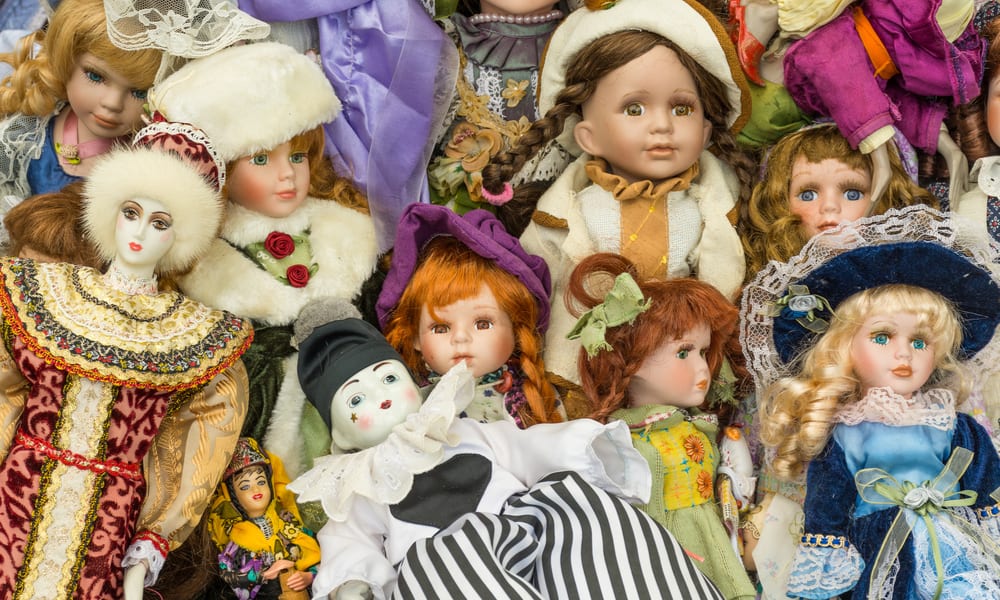
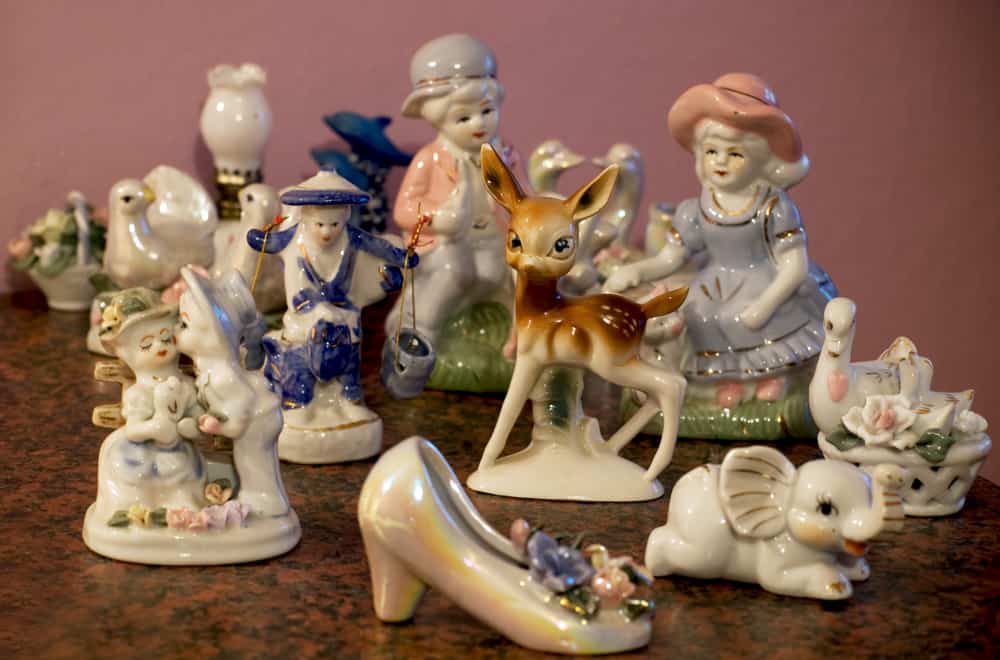
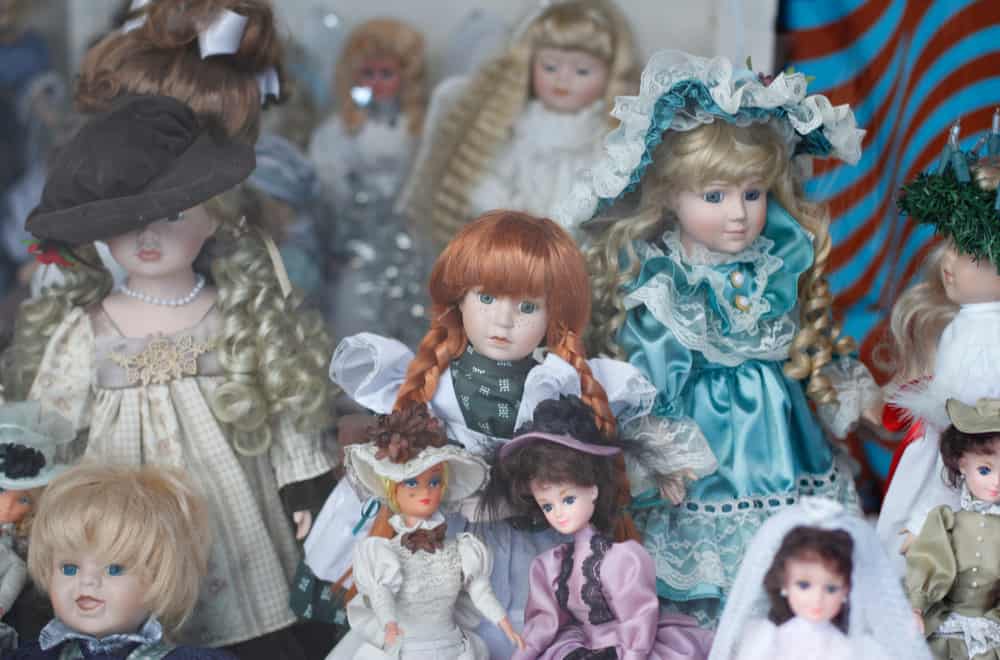
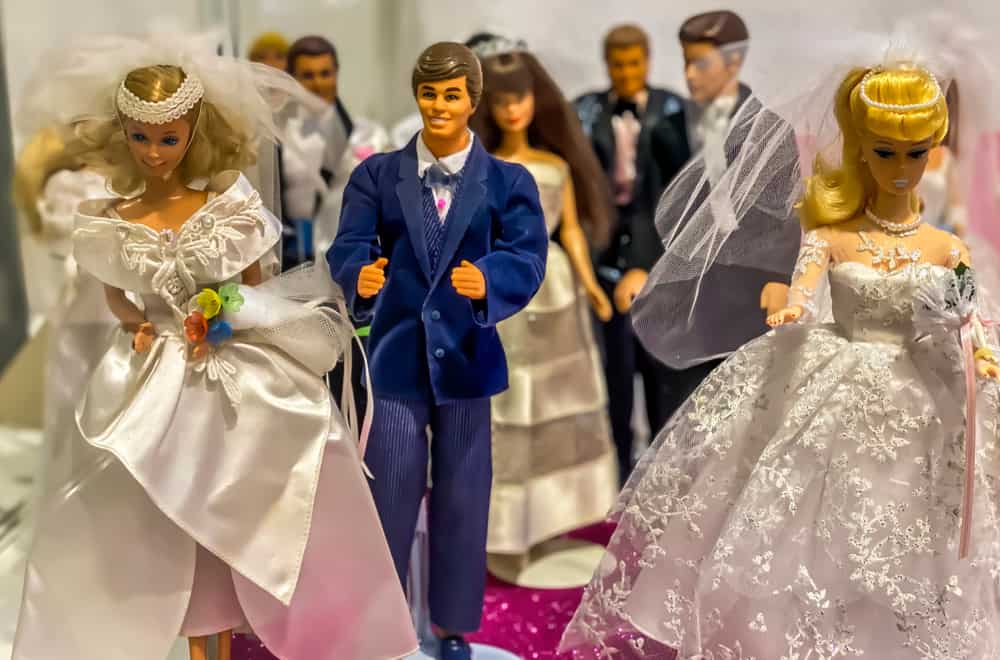
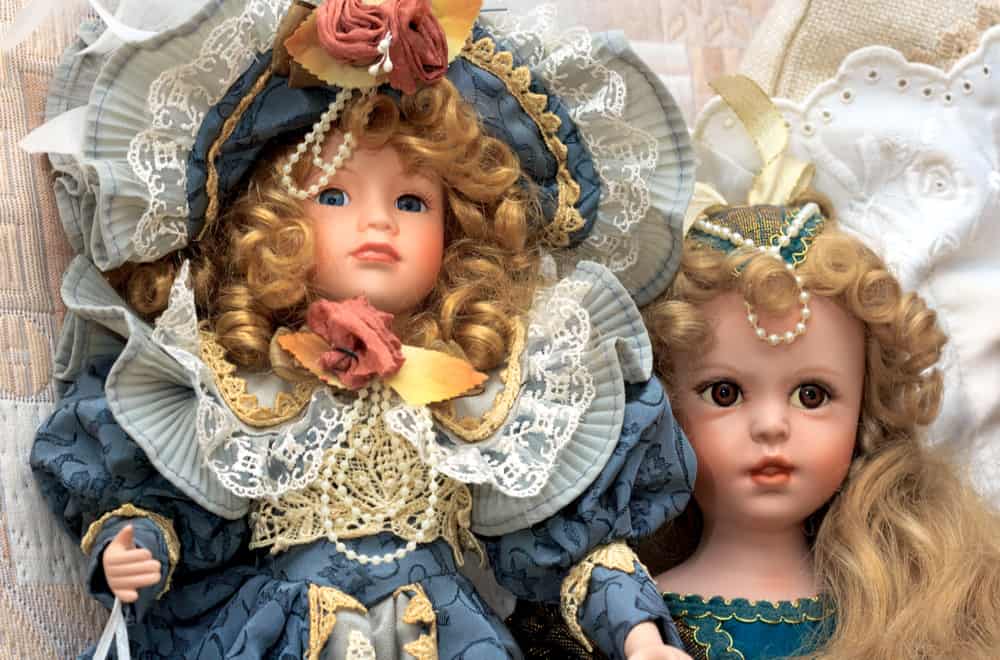
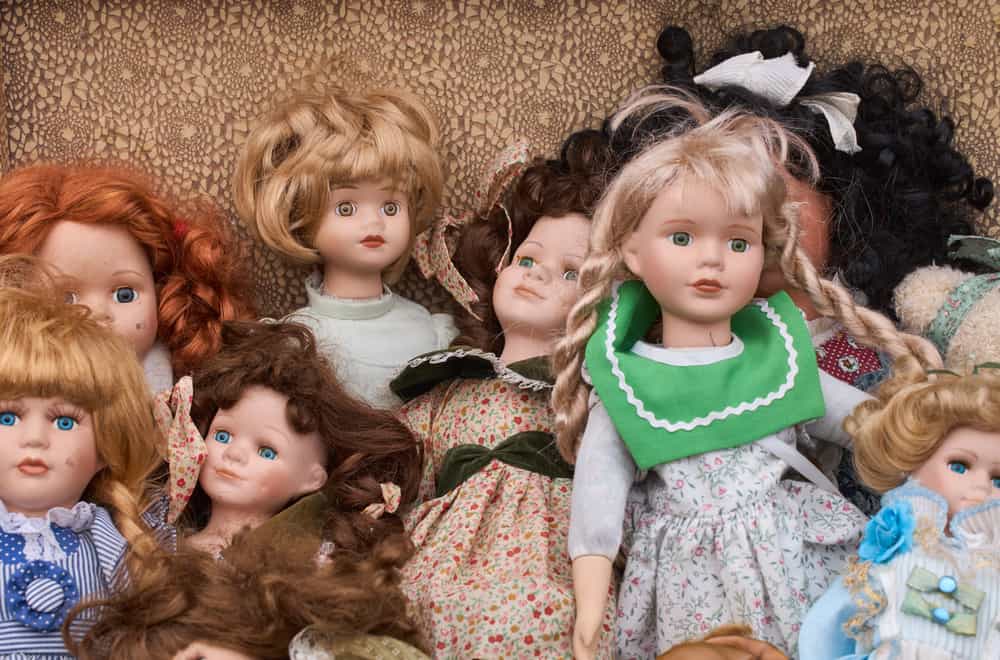
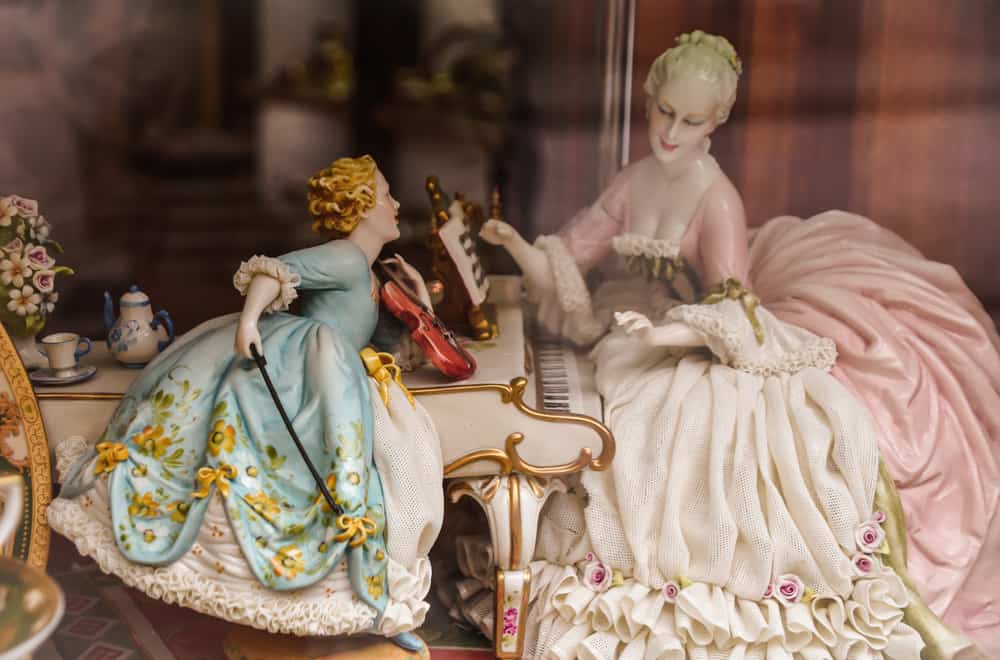
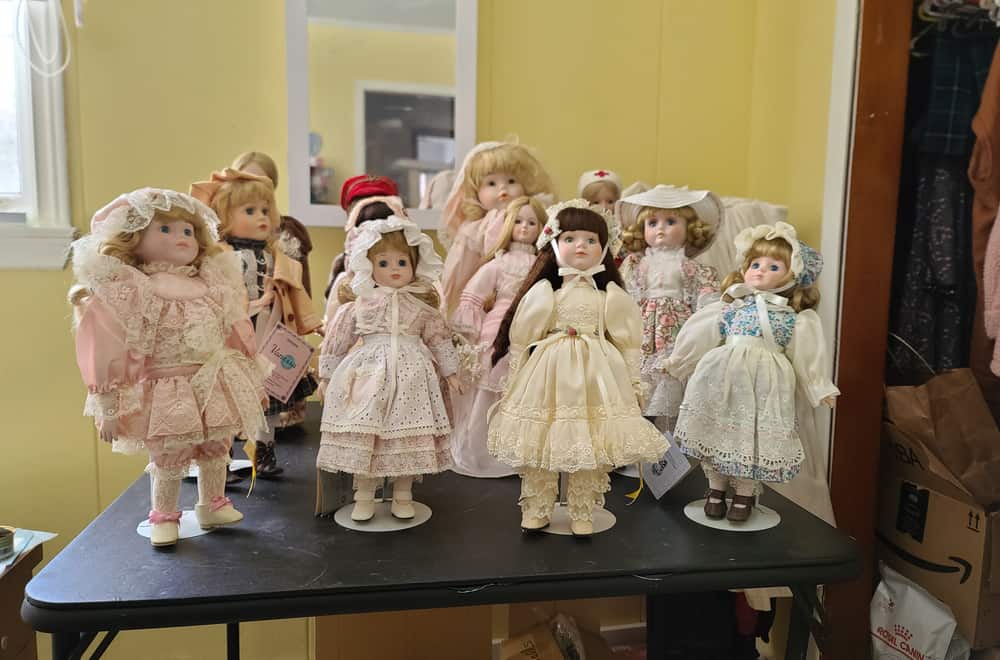
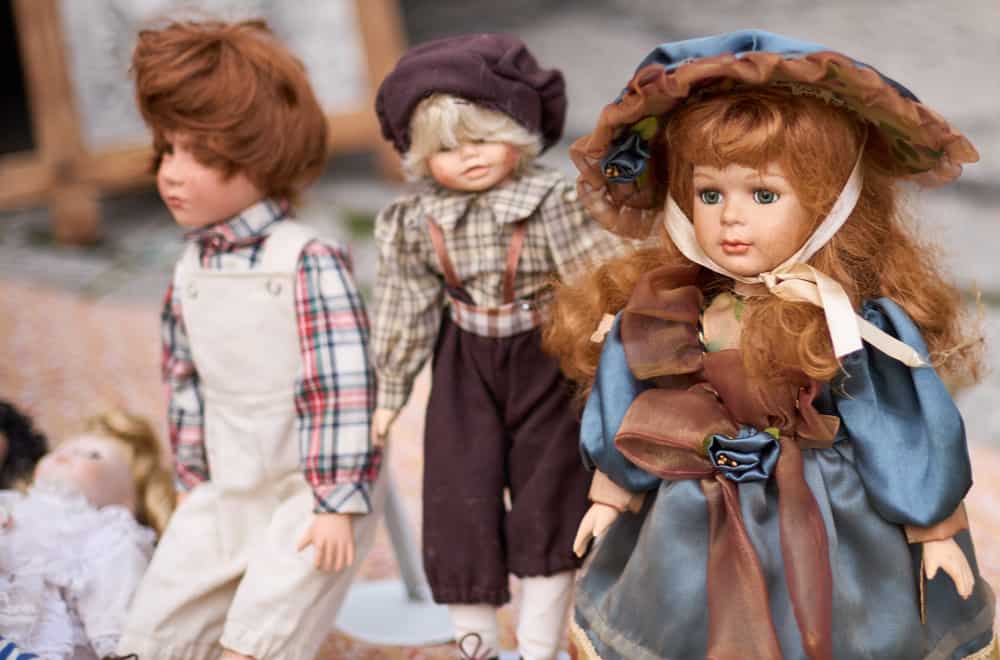
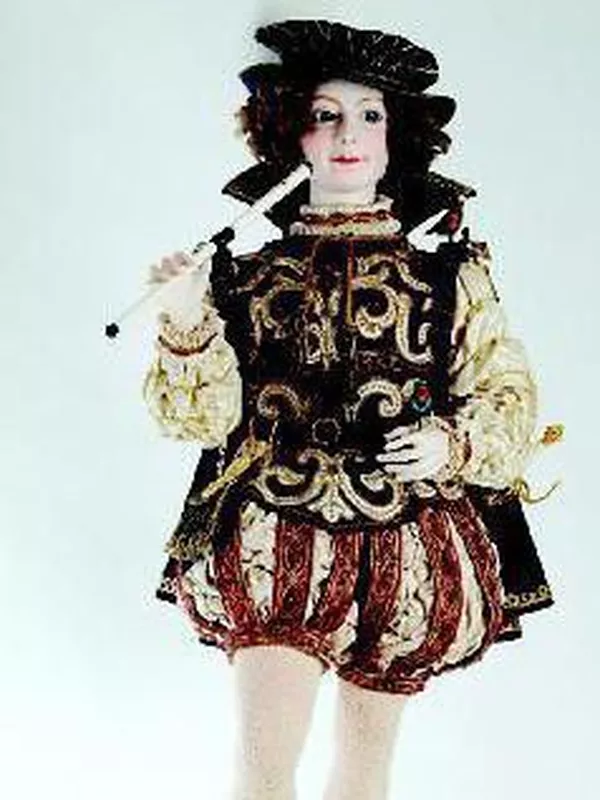
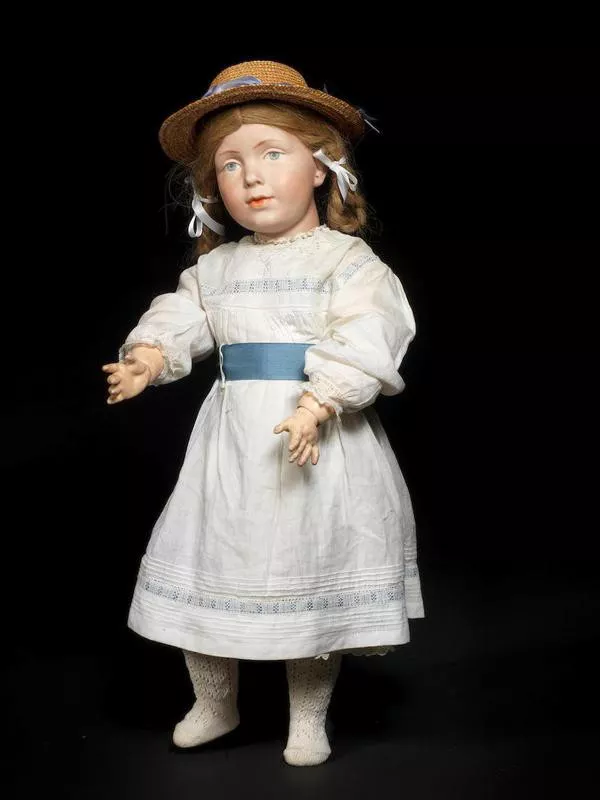
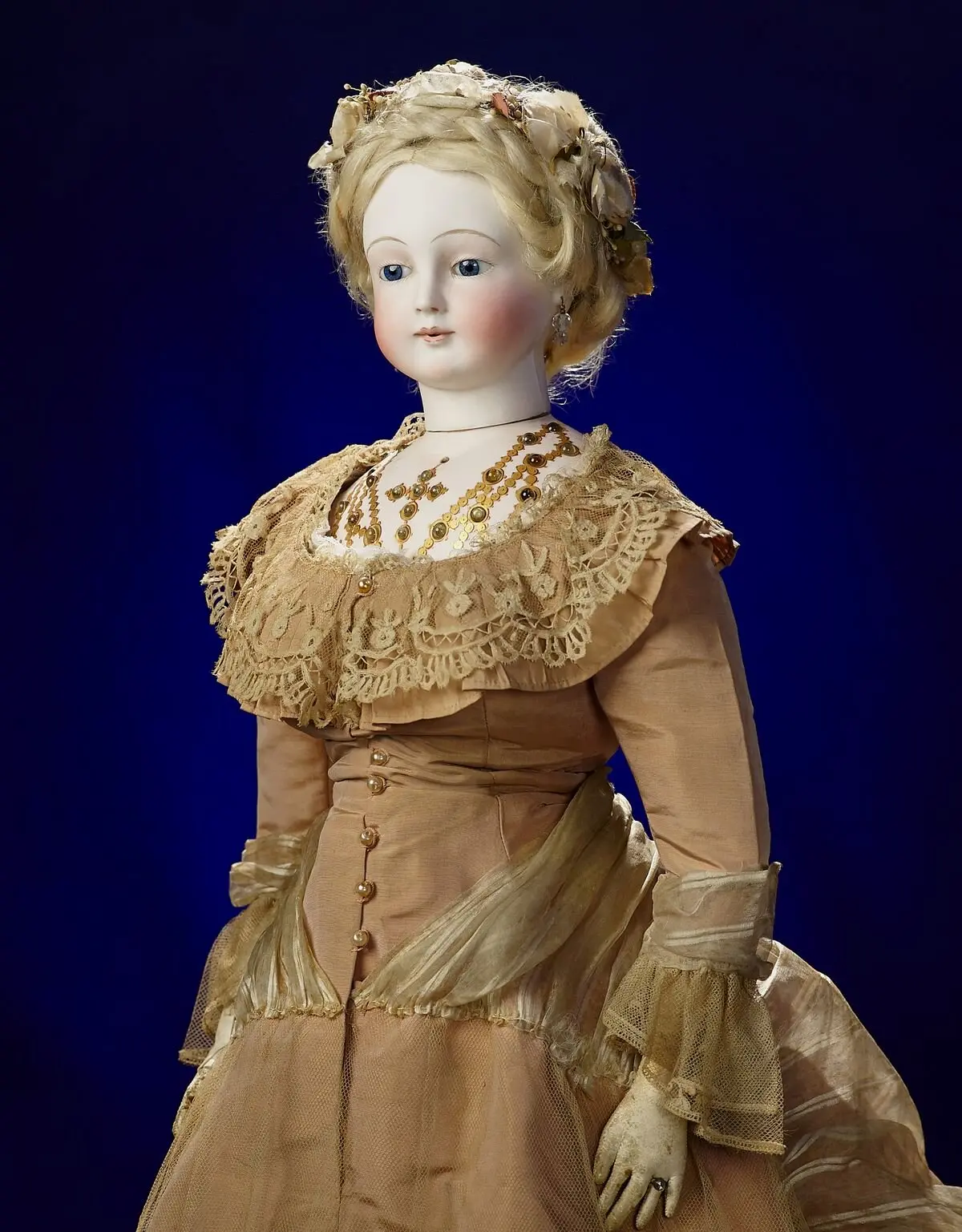
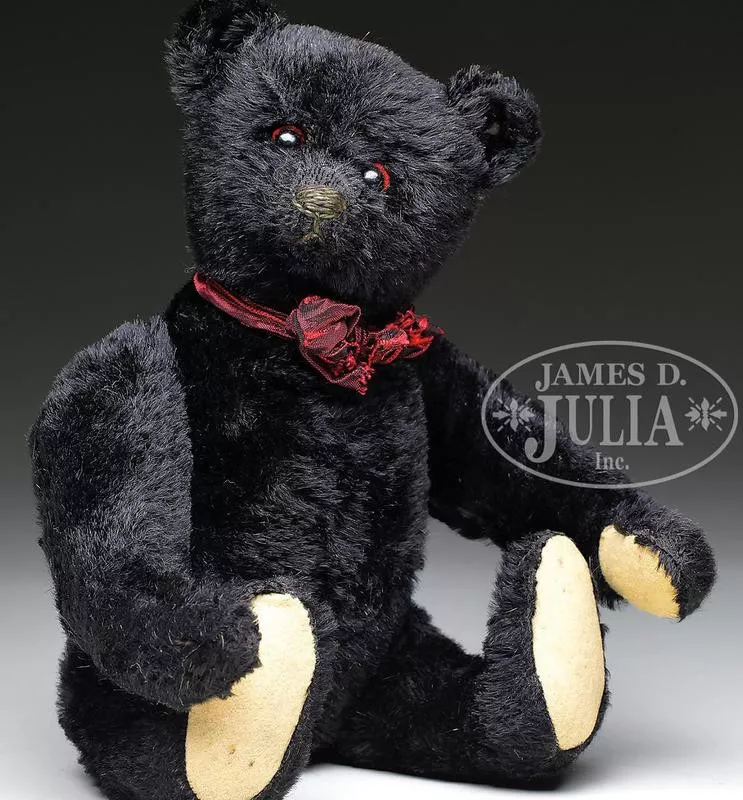
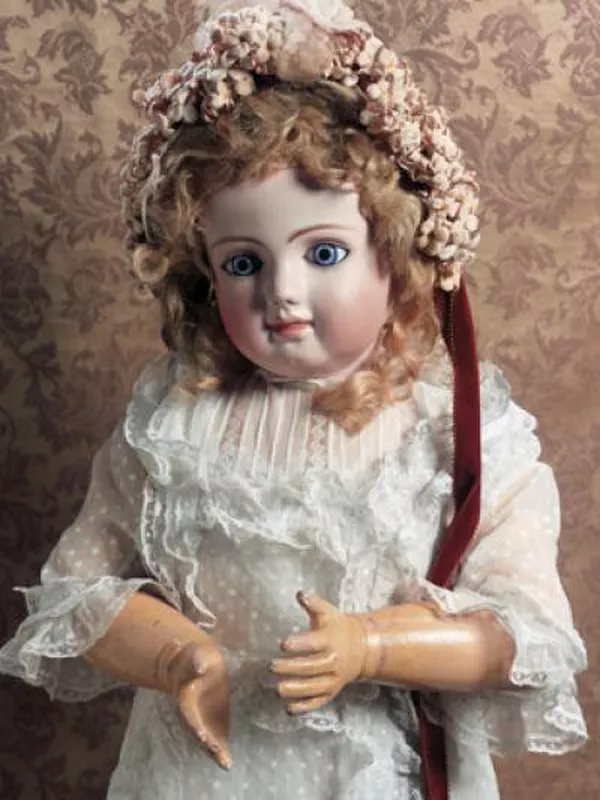
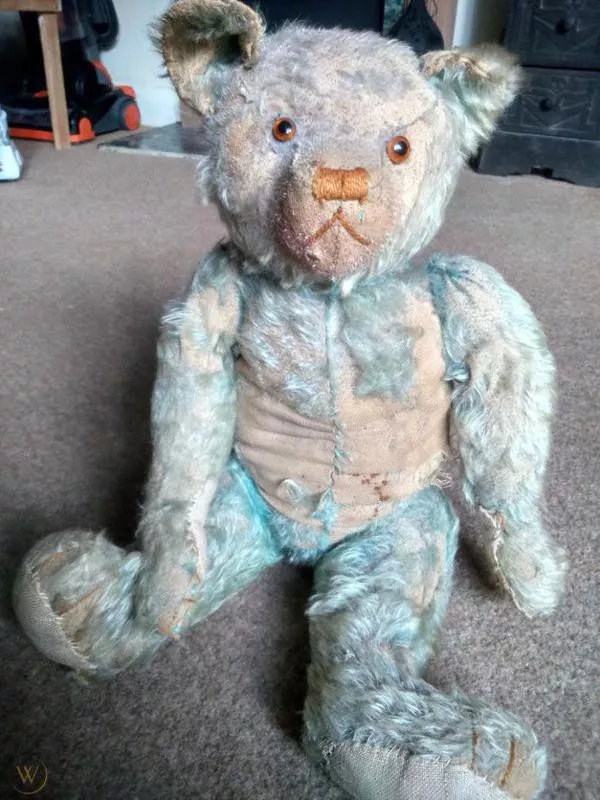
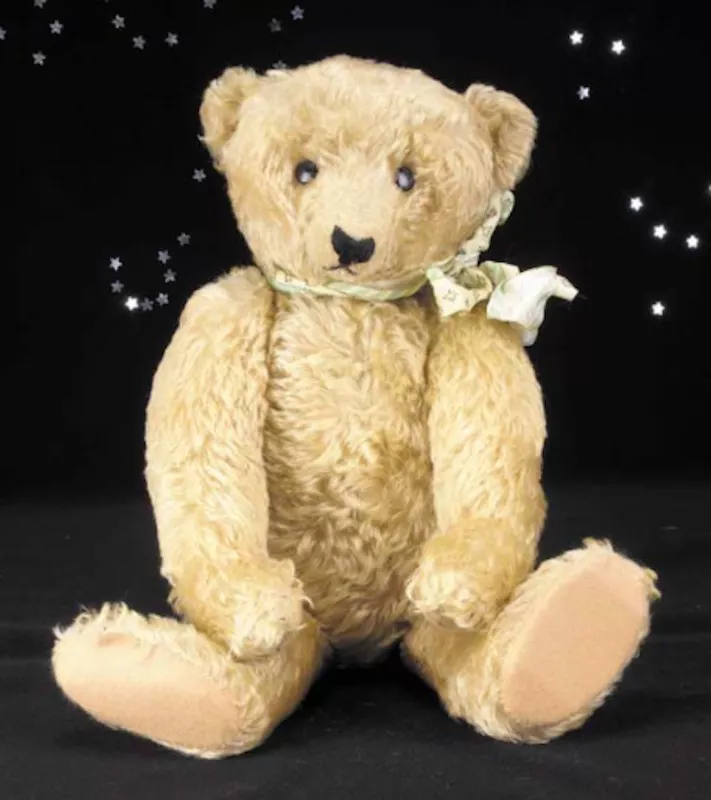
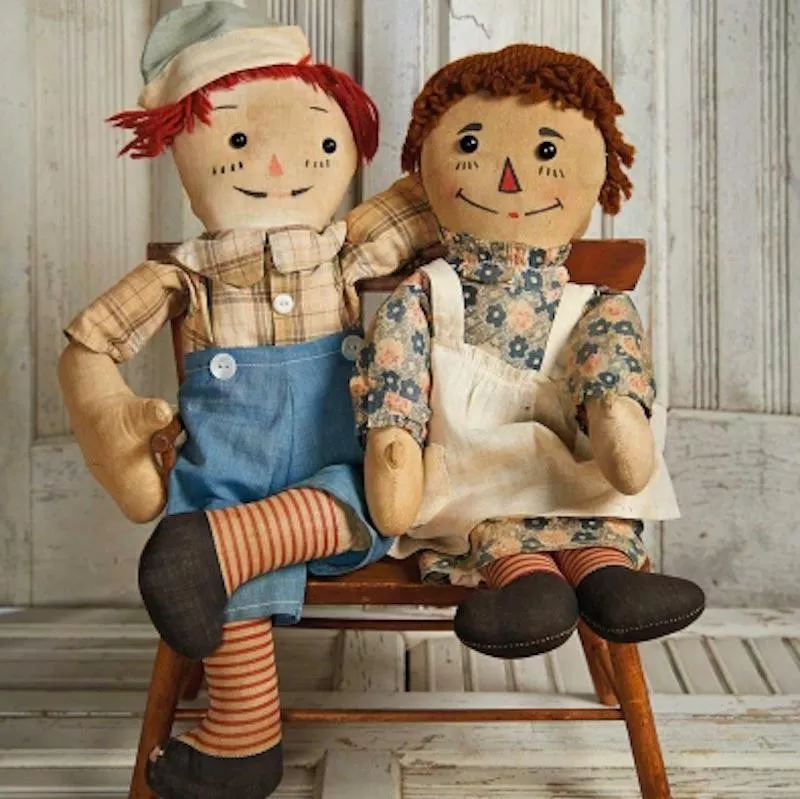
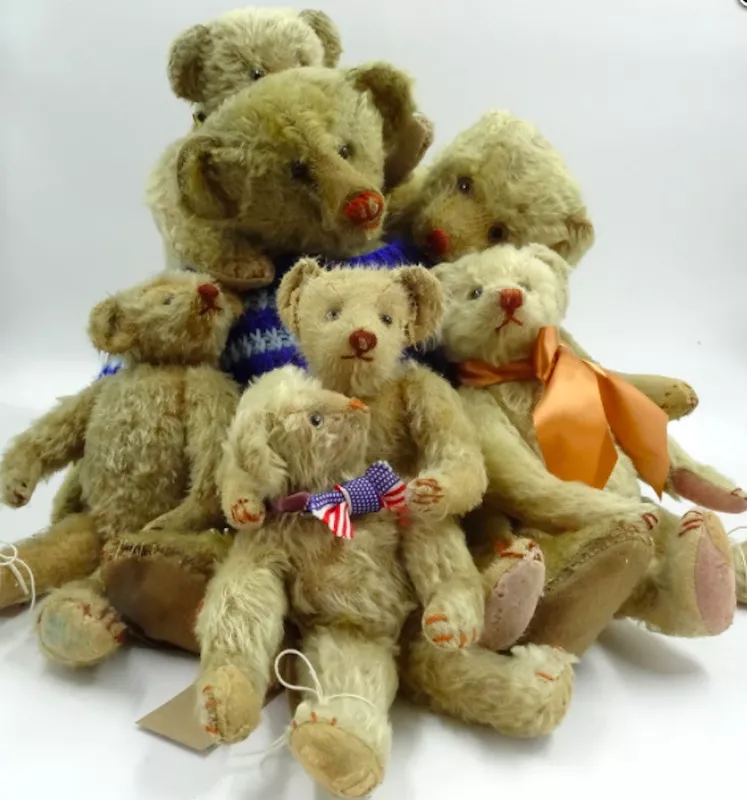
I have several old but rare dolls I would describe in poor condition. I know they wouldn’t be worth a lot of money, but I hate to just throw them away. Several are Madame Alexander dolls, and two are rare ones: The Story Princess and a Days of 47 Princess, both from Salt Lake City. I have two other Madame Alexanders and eight storybook dolls. Do you have any suggestions about finding a home for them? I can send pictures.